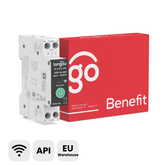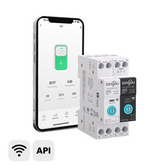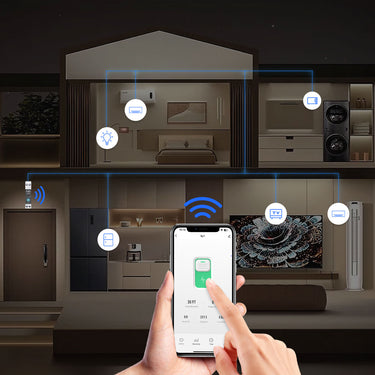MCCB VS RCCB, What the differences

In electrical systems, proper protection mechanisms are crucial for ensuring both safety and reliability. Two common types of circuit breakers used for these purposes are the Molded Case Circuit Breaker (MCCB) and the Residual Current Circuit Breaker (RCCB). Understanding the differences between MCCB and RCCB is vital for choosing the right protective devices for specific applications. This article delves into what MCCB and RCCB are, their construction, working principles, ratings, tripping actions, protections offered, pole configurations, comparative tests, and their respective application scenarios.
What is MCCB?
MCCB (Molded Case Circuit Breaker)** is an electrical protection device used to protect electrical circuits from overcurrent, which can result from short circuits or overloads. MCCBs are designed with a molded case to isolate electrical connections, providing enhanced protection and durability. Their primary function is to interrupt excessive current flow to prevent potential damage to electrical equipment and wiring, thereby ensuring system safety and reliability. MCCBs are versatile and can be used in various applications, ranging from residential to industrial settings, due to their adjustable trip settings and wide range of current ratings.
What is RCCB?
RCCB (Residual Current Circuit Breaker)** is an essential safety device that helps protect humans from electrical shocks and electrocution by detecting and interrupting residual currents. It primarily focuses on detecting earth faults by measuring the current difference between the live and neutral conductors. If an imbalance is detected, indicating a possible leakage current to the ground, the RCCB quickly disconnects the circuit, preventing potential electric shocks. RCCBs are critical for protecting human life in both residential and commercial environments where electrical safety is paramount.
Differences between MCCB and RCCB
Construction and Working Principle
MCCB:
——Construction: MCCBs consist of a molded plastic case that houses the internal components, including contacts, an operating mechanism, and an arc extinguishing mechanism. The case provides insulation and protection.
——Working Principle: When an overcurrent or short circuit occurs, it generates an electromagnetic field that trips the operating mechanism, causing the contacts to open and interrupt the current flow. MCCBs can also have thermal tripping elements that respond to prolonged overcurrent conditions.
RCCB:
——Construction: RCCBs consist of a differential current transformer, a tripping mechanism, and contacts. The transformer monitors the current in the live and neutral conductors.
——Working Principle: The differential current transformer detects any difference between the live and neutral current. If an imbalance (indicative of a leakage current) occurs, the tripping mechanism is activated, opening the contacts and disconnecting the circuit.
Rating and Tripping Action
MCCB:
——Current Rating: MCCBs are available in a wide range of current ratings, typically from 10 A to 2500 A, making them suitable for various applications.
——Tripping Action: MCCBs offer adjustable tripping characteristics, allowing users to set the trip thresholds according to their specific needs. This adjustability makes MCCBs versatile for different types of loads and conditions.
RCCB
——Sensitivity: RCCBs are available in various sensitivity ratings, typically ranging from 10 mA to 300 mA, to detect even small leakage currents.
——Tripping Action: RCCBs have fixed tripping thresholds based on their sensitivity ratings. They are designed to trip quickly (usually within 30 ms) when a residual current is detected.
Protection
MCCB:
——Equipment Protection: MCCBs primarily protect electrical equipment and wiring from damage due to overcurrent conditions, such as short circuits and overloads.
——Human Body Protection: While MCCBs can indirectly protect people by preventing electrical fires and equipment failures, their primary purpose is equipment protection.
RCCB:
——Human Safety: RCCBs are specifically designed to protect humans from electrical shocks and electrocution by detecting and interrupting earth faults. They provide a high degree of safety in environments where electrical safety is critical.
Number of Poles
MCCBs and RCCBs are available in different pole configurations to suit various applications:
MCCB:
——Typically available in single-pole, two-pole, three-pole, and four-pole configurations.
——Allows flexibility in protecting single-phase and three-phase electrical systems.
RCCB:
——Commonly available in two-pole and four-pole configurations.
——Designed to protect single-phase and three-phase systems from earth faults and leakage currents.
Application
MCCB:
——Industrial and commercial buildings for overcurrent protection of electrical circuits.
——Residential areas for protecting electrical installations from overloads and short circuits.
——Distribution boards and control panels for large machinery and equipment.
RCCB:
——Residential homes to protect against electric shocks and earth faults.
——Commercial establishments to ensure human safety in areas with high foot traffic.
——Bathrooms, kitchens, and outdoor environments where the risk of electric shocks is higher due to water exposure.
Conclusion
In conclusion, both MCCBs and RCCBs play crucial roles in electrical systems, but their functions and applications differ. MCCBs are designed for overcurrent protection, primarily safeguarding electrical equipment, while RCCBs focus on human safety by detecting and interrupting earth faults. Understanding these differences is essential for selecting the appropriate circuit breaker for your specific needs, ensuring both safety and reliability in your electrical installations.











